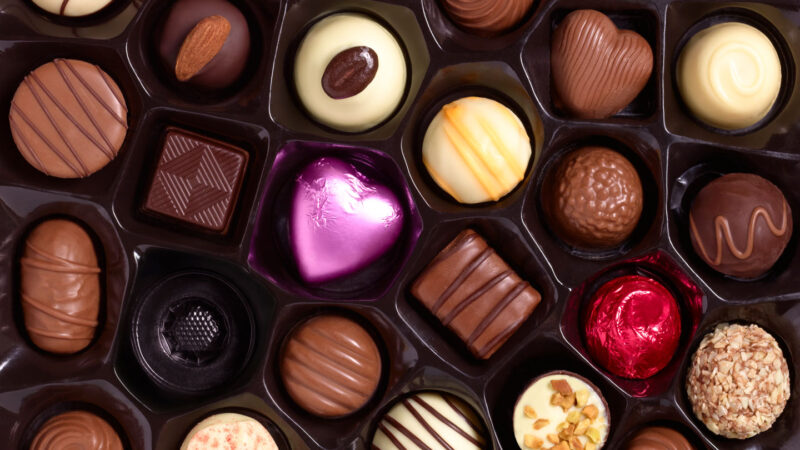Valentine’s Day isn’t just an opportunity to exchange nice notes with friends, family, classmates and crushes. It’s also a great excuse to eat many people’s favorite treat: chocolate.
The main ingredient for chocolate comes from the tropical cacao tree. The fruit pods of this tree hold big, brown seeds. Once those seeds are harvested, they are fermented, roasted and ground into cocoa. Mix that cocoa with ingredients like sugar, vanilla and milk, and you’ve got chocolate.
See all the entries from our Let’s Learn About series
People have been consuming cacao for millennia. In 2018, researchers reported that the earliest evidence of cacao products had been found in Ecuador. There, the Mayo-Chinchipe people made a wide range of food and drinks with cacao around 5,400 years ago. Other ancient societies in the Americas used cacao, too. The Aztec and Maya people fashioned it into offerings for their gods and even medicines.
Cocoa does indeed contain some healthy compounds. Antioxidants, for example. These are molecules that pump the brakes on oxidation. In the body, those reactions can damage DNA. Eating fruits, veggies and nuts rich in antioxidants can reduce that damage. Milk chocolate contains fewer of those useful compounds than dark chocolate does. So scientists have investigated ways to add them in to milk chocolate products.
Other scientists are studying ways to help keep cacao crops healthy. These plants are vulnerable to diseases. And that doesn’t just threaten chocolate lovers’ candy supply. It puts cacao farmers’ livelihoods at risk. So researchers are studying genes that may help these plants grow more quickly or better fend off disease.
Want to know more? We’ve got some stories to get you started:
Increasingly, chocolate-makers turn to science Researchers are studying chocolate to boost its potential health benefits and produce more of this tasty treat. (2/8/18) Readability: 7.6
As infections ravage food crops, scientists fight back Everything from chocolate to wheat to citrus fruits are at risk from devastating diseases. (8/15/19) Readability: 7.0
Blooms on ‘chocolate’ tree are crazy-hard to pollinate The plant’s reproductive system challenges Mother Nature’s pollen-movers. (2/8/18) Readability: 7.2
Taste and texture both matter when it comes to making chocolate so tasty. Here’s how chocolate engineers carefully control the process of making this candy to make it optimally delicious.
Explore more
Milking chocolate for its health benefits
How to grow a cacao tree in a hurry
Cool Jobs: Saliva offers a spitting image of our health
Sweaty, vinegary and sweet odors mingle to make dark chocolate’s smell (from Science News)
Diverse yeasts make their home on coffee and cacao beans (from Science News)
Ancient South Americans tasted chocolate 1,500 years before anyone else (from Science News)
In Maya society, cacao use was for everyone, not just royals (from Science News)
A pinch of saturated fat could make tempering chocolate a breeze (from Science News)
Activities
Make Janet’s chocolate mousse pie
Want a scientific excuse to chow down on some yummy chocolate? Try our candy core experiment! Use a straw to draw geologic cores from candy bars, and clean up by eating your materials afterward. Or you can learn about the power of evaporation with this chocolate experiment!




